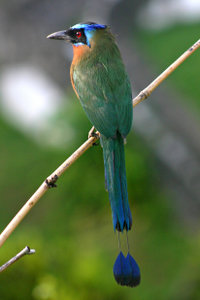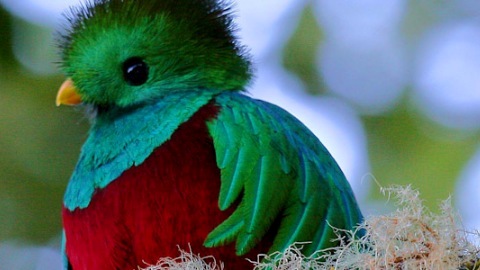Costa Rica News – I suspect many readers think bird watchers mostly are little old ladies in tennis shoes who march along forest trails with binoculars and occasionally shout, “Look, on that limb. It’s a fat-bellied beer sipper.” Nothing could be further from the truth. Bird watchers come in all ages and from all walks of life. They love their birds — spending an average of $4 billion per year to feed wild ones and an additional $1 billion on feeders, baths and houses.
 All told, 46.7 million Americans consider themselves birders, and the activity continues to surge — growing faster than mountain biking or skiing. Here in Ohio, it’s growing rapidly too. So fast, in fact, the Columbus tourism folks estimate they spend about $26 million per year along Lake Erie alone. Am I a birder? Yes I am — although I’m not nearly as proficient as many who can seem to spot an Indigo bunting at 100 yards in heavy brush. I love to see them at my bird feeders in winter and early spring, and the cardinals, blue jays, house finches, sparrows, mourning doves and other species have brightened many a dreary, cold day.
All told, 46.7 million Americans consider themselves birders, and the activity continues to surge — growing faster than mountain biking or skiing. Here in Ohio, it’s growing rapidly too. So fast, in fact, the Columbus tourism folks estimate they spend about $26 million per year along Lake Erie alone. Am I a birder? Yes I am — although I’m not nearly as proficient as many who can seem to spot an Indigo bunting at 100 yards in heavy brush. I love to see them at my bird feeders in winter and early spring, and the cardinals, blue jays, house finches, sparrows, mourning doves and other species have brightened many a dreary, cold day.
I still remember driving onto Johnson Island in Lake Erie, coming around a curve, and nearly wrecking my car when I saw six beautiful orioles in a tree beside the road. The black-and-gold birds posed for a minute or two before flying on; they made my trip that day. You might wonder what makes our winged friends so appealing? Well, they’re pretty for one.
“Everybody loves birds,” ornithologist John Fitzpatrick once said. “You don’t need to know a thing about them to enjoy them. They enjoyed birds in the days of the ancient Egyptians and in cave man days, too.”
It’s a fortunate thing that some of the world’s best birding lies along Lake Erie. The bird watching is so good it draws visitors from other states, which adds much to our economy. There’s a Lake Erie Birding Trail that offers a great opportunity to view many rare and exciting species. The trail encompasses the Lake Erie shoreline and inland areas from Conneaut to Toledo. More than 80 primary birding sites are highlighted along the trail, which is divided into seven loops. The sites within each loop are similar in habitat and landscape, and nearly 400 species of birds have been spotted in these areas.
One of those seven loops, which can be found on the Lake Erie Birding Trail website, is the Western Lake Erie Marshes Loop. It covers places such as the Touissant State Wildlife Area and Magee Marsh State Wildlife Area to Maumee Bay State Park and Pearson Metropark. Magee Marsh, incidentally, which lies west of Port Clinton, has been named in more than one birding magazine as one of the top-10 places in the U.S. to see birds.
Birders don’t seem to mind spending money, either — whether it be for meals, lodging, gasoline and other necessities or for travel and tours to other places. In fact, where’s the best place in the world to see strange and rare birds? It just might be Costa Rica, a tropical country that’s home to nearly 840 species of birds that range from scarlet macaws to resplendent quetzals. I’ve been there and treasured the trip.
Getting into this growing sport is easy. You don’t need to be in great physicals shape and you don’t need a lot of equipment — just a pair of binoculars and good walking shoes. It’s wise to buy a birding book, maybe a copy of Peterson’s Field Guide to the Birds, although you can get books at your local library. Otherwise, all it takes is a nice day and a few spare hours.
That fat-bellied beer sipper just might be waiting close by.
Written by Dick Martin, http://www.newarkadvocate.com/


1 comment
Them thar fat bellied beer sippers are Gringoze. A Tico on the branch looks like a rooster who got caught in an oil slick.